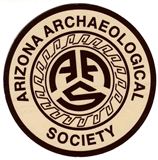

Glossary of Terms
Adobe: Clay, silt, and sand combined with water to form a plastic material which when dried forms a hard construction material. Also at times used interchangeably with the term Caliche.
Adobe Bricks: Formed in various types of molds. Historically, wooden hand forms were used. The adobe is mixed and pressed into the forms. The forms are removed and the bricks are left to dry in the sun. Kiln fired bricks were used in some pish missions.
Agents of Deterioration: Actions which negatively impact the preservation and stability of a site. These include wind, precipitation, water runoff, roots, insects and rodents, capillary action (rising moisture), vibrations, people, animals, etc.
Back filling Dumping soil into excavated holes or covering exposed features with soil. This can be done to protect features or to level ground for construction of a road or building.
Basal Erosion: Deterioration of the base or lowest portion of a wall
Caliche:Under ground deposit of Calcium Carbonate. The deposit is formed primarily in the arid desert areas as moisture precipitates down through the ground soil. As the moisture evaporates the calcium carbonate deposits are left to harden. Used extensively in prehistoric architecture for its cementation or bonding ability.
Capillary Action:Moisture is pulled from the wet soil below grade up into the dry exposed wall surfaces. See Rising Damp below.
Dead Load: The pressure or stress exerted against a wall. This usually occurs when a wall is subject to differential fill (see definition below). The stress can cause a wall to lean, slump, or collapse.
Differential Fill: This refers to the level of soil, stone and other material on both sides of a wall. An example of this would be an excavated room where the interior of the room has the fill removed but the exterior side of the wall is unexcavated.
Drop-box:Plastic box shaped device used to collect water runoff. It is designed so that the exit drain pipe is high on a side, this allows sand sediments to collect in the bottom of box.
Dry laid: Wall construction technique using no mortar to bond the stones. Stones are stacked on one another to form a wall or feature.
Fabric :All material used to construct a site. In walls, this would include mortar, adobe bricks, stone, wood, lime, etc.
Geotextile: A breathable "earth-fabric" used by an archaeologist as a marker and to help reduce slope erosion. Example is Trevira Spunbond, a nonwoven needle punched continuous filament polyester fabric which is resistant to freeze-thaw, soil chemicals etc.
Historic: Time after contact with the pish (around 1540) which is assumed to be the beginning of written records. To qualify as historic a structure or object must be at least 50 years old.
Indurated Caliche : Hard, concrete-like Caliche which can be used as building material. It is estimated that it forms at the rate of 1 inch per 100,000 years.
Jacal: Vertical and horizontal wood structure plastered with mud. The mud is applied to both sides of the wood structure.
Marker: Any material used to distinguish or identify where an episode of work was performed. Used to separate original surface from backfill, etc. Examples include, geotextiles, microtagent, sand, gravel and cinders.
Masonry: Term use to indicate that a wall contains brick or stone.
Mortar: Material used to bond construction components into a solid structure. In prehistoric times mud was the primary mortar, while historically lime and cement were used most often.
Plastic: Material which is soft enough to be formed or molded. Mud is a plastic form of soil.
Prehistoric: Time before contact with the pish (around 1540) which is assumed to be the beginning of written records.
Preservation: Maintaining a structure as it currently exists and protecting it from deterioration.
Recap: Refers to the application of a coat of material-- usually mud, soil, cement, etc.,-- which protects the exposed top surface. This is sometimes referred to as "the sacrificial coat."
Reconstruction: Rebuilding a structure or portion of a structure based on available data. Its use may be different from that for which the structure was originally intended.
Rehabilitation : Restoration of a structure for future use. The use maybe different from that for which the structure was originally built.
Repointing: Involves removing loose deteriorated mortar from mortar joints and replacing it with new mortar.
Restoration: Making a structure appear as it was originally or at some specified point in time.
Rising Damp Absorption or penetration of water into the internal structural fabric of a wall from below ground level by capillary action. This moisture may contain salt which causes a condition called "salt erosion."
Salt Erosion: Soluble salt which is present in the soil matrix is brought to the surface of mud and stone by capillary action and evaporation. The salt causes both chemical and mechanical damage to the wall fabric. The positively charged ions interfere with the clay's ability to bond to the sand and silt grains which result in weak fabric. Def: When the dissolved salts crystallize.
Stabilization: Practice of making a structure stable or structurally sound and minimizing its deterioration while preserving its current appearance.